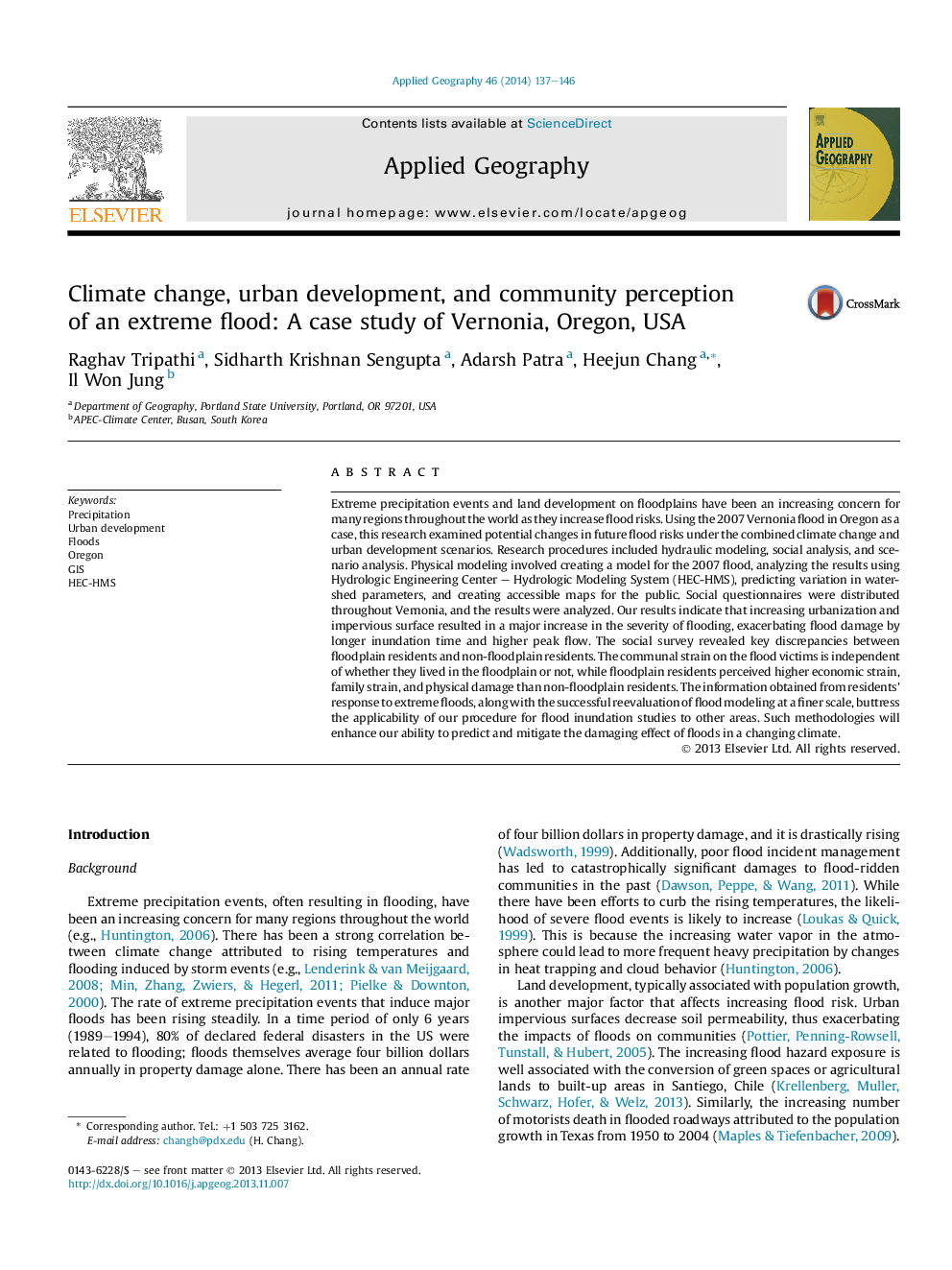| Article ID | Journal | Published Year | Pages | File Type |
|---|---|---|---|---|
| 83486 | Applied Geography | 2014 | 10 Pages |
•The HEC-HMS simulates the observed peak flow during the extreme flood well.•Climate change and land development increases peak flow in a non-linear way.•Land management could reduce peak flow even though precipitation increases.•The social perception of floods varies the location of residence.
Extreme precipitation events and land development on floodplains have been an increasing concern for many regions throughout the world as they increase flood risks. Using the 2007 Vernonia flood in Oregon as a case, this research examined potential changes in future flood risks under the combined climate change and urban development scenarios. Research procedures included hydraulic modeling, social analysis, and scenario analysis. Physical modeling involved creating a model for the 2007 flood, analyzing the results using Hydrologic Engineering Center – Hydrologic Modeling System (HEC-HMS), predicting variation in watershed parameters, and creating accessible maps for the public. Social questionnaires were distributed throughout Vernonia, and the results were analyzed. Our results indicate that increasing urbanization and impervious surface resulted in a major increase in the severity of flooding, exacerbating flood damage by longer inundation time and higher peak flow. The social survey revealed key discrepancies between floodplain residents and non-floodplain residents. The communal strain on the flood victims is independent of whether they lived in the floodplain or not, while floodplain residents perceived higher economic strain, family strain, and physical damage than non-floodplain residents. The information obtained from residents' response to extreme floods, along with the successful reevaluation of flood modeling at a finer scale, buttress the applicability of our procedure for flood inundation studies to other areas. Such methodologies will enhance our ability to predict and mitigate the damaging effect of floods in a changing climate.
